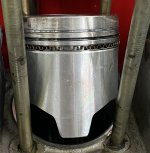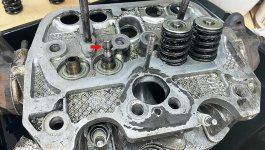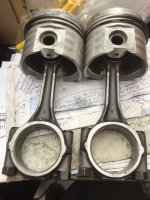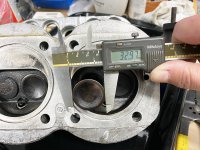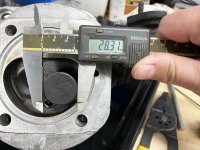Re the Mityvac test, I see the inlet splits into two so not possible to test individual cylinder inlet valves as the opposite one will probably be open giving a false reading, though you could test the exhaust valves .1. Going back to points. I don't have any of these parts. Points failed me the first week I owned the car 8 years ago. They were the first thing to go.
2. Faulty induction pickup. I tried my original first without any changes, and then bought a different one, both with the same result.
3. Checking for suction at the plug. I can try this next. I have a mity-vac. Haven't attempted to vacuum down a cylinder before, but it's worth a shot. If it leaks, the head is coming off. If it doesn't...the head is coming off anyway as I'm out of ideas.
The big thing I changed from a perfectly running engine to now running on one cylinder is the pistons/rings/cylinders/head gasket. The most likely culprit is there somewhere. I just doubted everything else first, as that's a lot easier to get to.
The whole reason for this endeavor is the 'Sport' 650cc engine I bought from a prominent U.S. supplier was built without snap rings on #1 wrist pin. It bounced back and forth and scored the cylinder down both sides. Oil leaks by and starts oozing out the weep holes in the head. I thought it was just a head gasket.
Having said that if you have the head off with the rockers disconnected the vales should all be shut allowing you to test them, you could also with the head upside down and the plugs in pour petrol or cleaning fluid into / fill the combustion chambers and none should leak out the inlet or exhaust ports if the valves are seating correctly.
After the cylinder damage due to the wrist pin/gudgeon pin movement what was done to rectify?
Another thought if the rocker gear was removed prior to dismantling so all valves were closed and head was still on it would be possible to do a "leak test" where compressed air (150psi) is applied via a spark plug adaptor which should show where most of the loss is.


